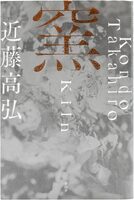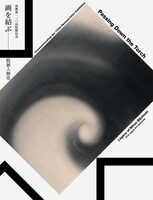$51.98
- Softcover with open-back binding
- 420 pages
- 220 x 297 mm
- ISBN 9784861529467
- Japanese, English
- 2024
Six decades of wild, dynamic images: a look into the fantastic mind of Keiichi Tanaami through more than 600 spectacular color plates.
In 1975 Keiichi Tanaami became the founding art director of the Japan edition of Playboy, gaining attention for his innovative graphic design. His unique philosophy that printed materials are not reproductions, but rather an infinite number of original works led him to express himself through a wide range of mediums, including paintings, silkscreens, collages, animation, experimental films, objets d’art, and installations. His passion for expression knew no bounds: from the 2000s onward he worked with fashion brands and musicians, created 700 Picasso-inspired paintings during the Covid-19 pandemic, and “collaborated” with the works of the late manga artist Fujio Akatsuka.
Today Tanaami's work is garnering renewed international attention, and this definitive collection covers the more than six decades of his career, including through 600 plates of his earliest to last works. This is supplemented by an extensive number of valuable visual and textual materials and essays giving insight into his oeuvre from a range of perspectives.
Produced with the full cooperation of the artist
Tanaami chose the designer, oversaw the layout and cover design himself, and conducted multiple color checks, giving full play to his skills as a professional with extensive knowledge of printing techniques.
A behind-the-scenes look into the transformation of memory into art
In an opening essay, “Bridges: A Border between the Secular and the Sacred,” Tanaami offers an intimate account of how his childhood memories gave shape to his recent work A Hundred Bridges.
Insights into Tanaami’s artistic process
Tanaami typically worked by first photocopying his draft drawings to shrink them down, then using them to decide the composition and create specs detailing halftones and colors according to the DIC Color Guide. After that, his assistants finished up each piece on the computer according to his instructions. The book includes those spec drawings, along with hand-drawn storyboards from the animated and experimental films that he created in the 1970s.
Five essays offering multifaceted perspectives
Five experts analyze Tanaami’s genre- and media-crossing oeuvre and the historical background in which it was formed, from his early childhood during World War II through Japan’s period of high economic growth to the twenty-first century.
- The Ground Zero of Pop―War and Sex in the Art of Keiichi Tanaami
Hiroko Ikegami (art historian; professor, Graduate School of Humanities, Osaka University) - Keiichi Tanaami―Pop on Paper in the 1960s
Sarah Suzuki (associate director, The Museum of Modern Art, New York) - Keiichi Tanaami, Image Director―Roots in 1950s and 1960s Art and Design
Natsu Onodera (curator, The National Art Center, Tokyo) - Keiichi Tanaami―Experimental Animator, Structuralist Filmmaker
Julian Ross (assistant professor, Leiden University Centre for the Arts in Society) - The Postwar Years and 21st Century for Keiichi Tanaami
Yuji Yamashita (art historian; professor, Department of Art, Meiji Gakuin University)
Extensive content offering a deeper understanding of Tanaami
Included is an extensive interview of Tanaami, a list of key words having to do with anecdotes of his ventures between dream and reality, and an account of an exploration of his studio in search of clues into the secrets of his mind. There is also a chronology, an exhibition history, a list of works in public collections, and a bibliography.
Keiichi Tanaami (1936–2024), born in Tokyo, graduated from Musashino Art University. His unparalleled work as an art director, experimental film and animation maker, and genre-crossing creative artist has won him international renown, with exhibitions held around the world.









































